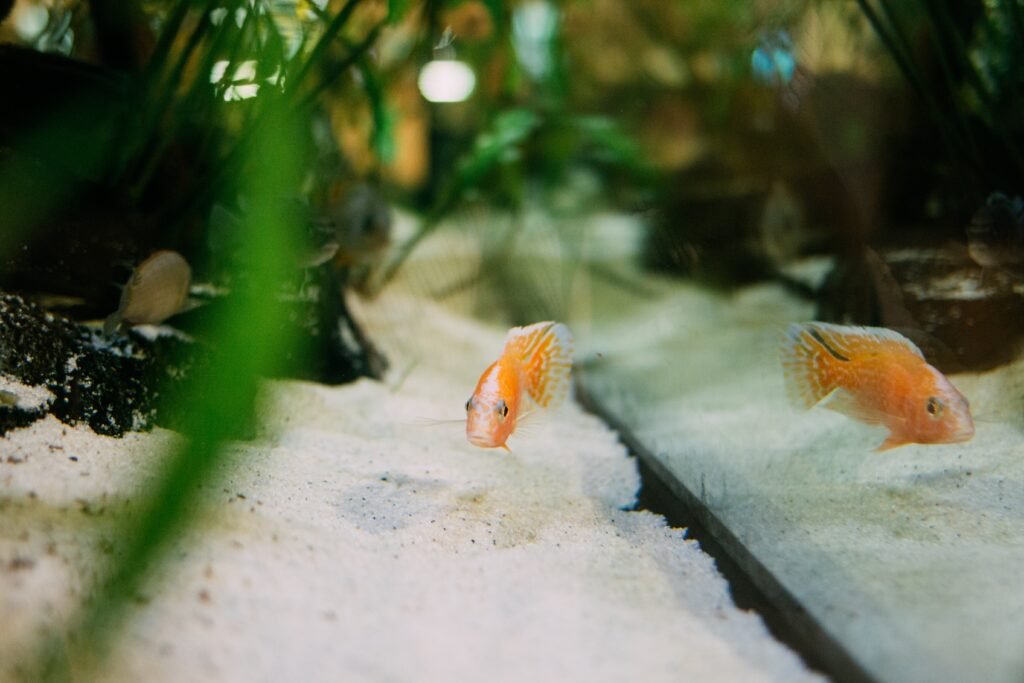How to Care for a Pet Fish?
Are you looking for a calming, noise-free, and less expensive pet? Then choosing fish as your new pet is not a bad idea at all. Fishes are undoubtedly great pets, and easy to care for, and watching them swim through the water is very peaceful and relaxing. An aquarium full of fish adds mesmerizing beauty to your lounge or living room.
Taking care of fish is an easy task. However, it does not mean they are maintenance-free. They depend on you for the lookout, as they live in a different habitat (water) than yours. Maintaining the chemical and biological parameters of water inside the aquarium is of utmost importance; you can’t skip it to keep your fish healthy, happy, and alive.
Things to care for a pet fish:
Food, clean water, proper filtration, and specific heat are the essential elements that your pet fish will require. Still, the exact specifications will depend on the type of fish you choose, how big it grows, and several other factors.
So first, choose your fish and then act according to their size and needs.
Points to remember while choosing a pet fish
- To purchase fish, instead of online buying, always buy from a reputable dealer or store.
- While choosing between freshwater and saltwater fish, go with freshwater fish, as they require less aquarium maintenance.
- Small fish like neon tetra, zebra danios, and Livebearers are peaceful breeds and require less tank space, making them a good choice for beginners.
- Look closely at fish and finalize your choice based on fish behavior rather than their color and appearance. They should appear healthy, active, and swimming around at a steady pace.
- Make sure not to put non-aggressive or aggressive fish together. If you do so, the aggressive fish will usually attack the others. Choose friendly fish breeds like goldfish, guppies, and tiger pleco that will not cause trouble.
- Most popular fish breeds: The most popular types of pet fish are goldfish and bettas because they don’t always require heaters, can tolerate fluctuations in water chemistry and are more challenging than other fish.
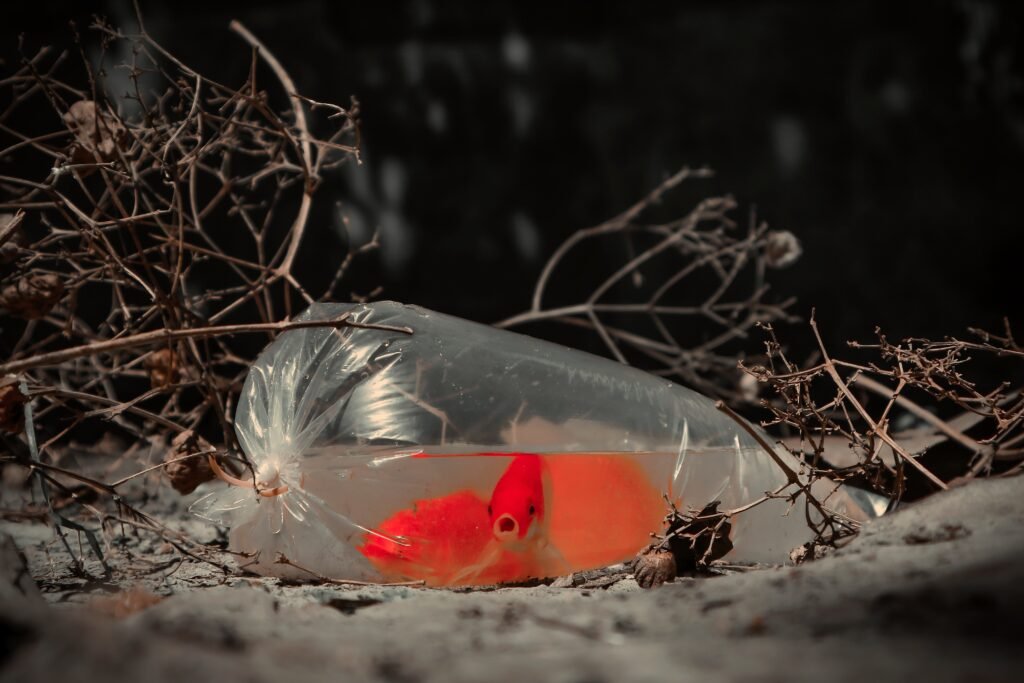
Let’s learn the basics about fish habitat!
Prepare a perfect habitat for a pet fish
A fish habitat or aquarium consists of a large glass or acrylic tank equipped with an air pump, water filter, and a submersible heater.
Consider a larger tank size.
A good rule of thumb for aquarium size is one gallon of water per every inch of full-grown freshwater fish. While for a saltwater fish, measuring the same size requires half a gallon of water per inch of fish. To decide which tank to purchase, multiply these figures by the total number of fish.
Note: It’s better to get a slightly larger tank, as overcrowding and bioload can cause several health problems for fish
Consider placing the tank in a peaceful place.
Place your tank on a level to avoid tipping over and in a quieter place without tv and with less foot traffic. Make sure to place your tank out of reach of direct sunlight to prevent algae growth.
Note: It’s essential to place your tank near a functioning electrical socket, as you’ll need to plug in devices like your heater, light, and filter.
Add a substrate
As a general rule, add one pound of substrate per gallon of water. You can choose sand, rock, or gravel as tank substrates. Make sure to rinse them thoroughly before putting them in the tanks.
Install heater to maintain temperature
Most fish require water temperatures between 72 and 84 degrees Fahrenheit. To regulate the temperature in an aquarium, you’ll need to install a heater in your tank. However, some freshwater fish, like goldfish, are cold-water fish and do not require water heaters. So skip this step for the cold water fish.
Install a filtration system to clean tank water
A filtration system keeps your tank water clean and removes many pollutants.
- Biological filtration uses active bacteria to break down toxic ammonia cheaply and stably.
- Mechanical filtration traps particles like plant leaves, uneaten food, and feces and removes them from the tank before decomposing into ammonia.
- Chemical filtration absorbs pollutants with activated carbon.
Clean your filter media if the filter is close to overflowing.
The filters need cleaning when they are full of debris, otherwise, do not clean them. Make sure to clean only the first media filter at the backside of the filter. The rest filter media contains beneficial brown algae growths on them that remove the toxic chemicals from the tank that keep your fish alive.
Note: For most filters, you’ll need to pull them out entirely and replace them with new ones.
Install Air pumps to aerate tank water
Air pumps produce powering air stones and provide aeration and circulation of water. It promotes the exchange of oxygen and carbon dioxide at the water’s surface.
Add decor to the tank.
To decorate your tank better, choose between natural options like rocks and driftwood. They will also prove a safe hiding place for your fish. Make sure to clean any objects before placing them in the tank.
Note: Make sure that your decorations don’t have sharp edges, plastic pieces that can break off, or paint that might flake.
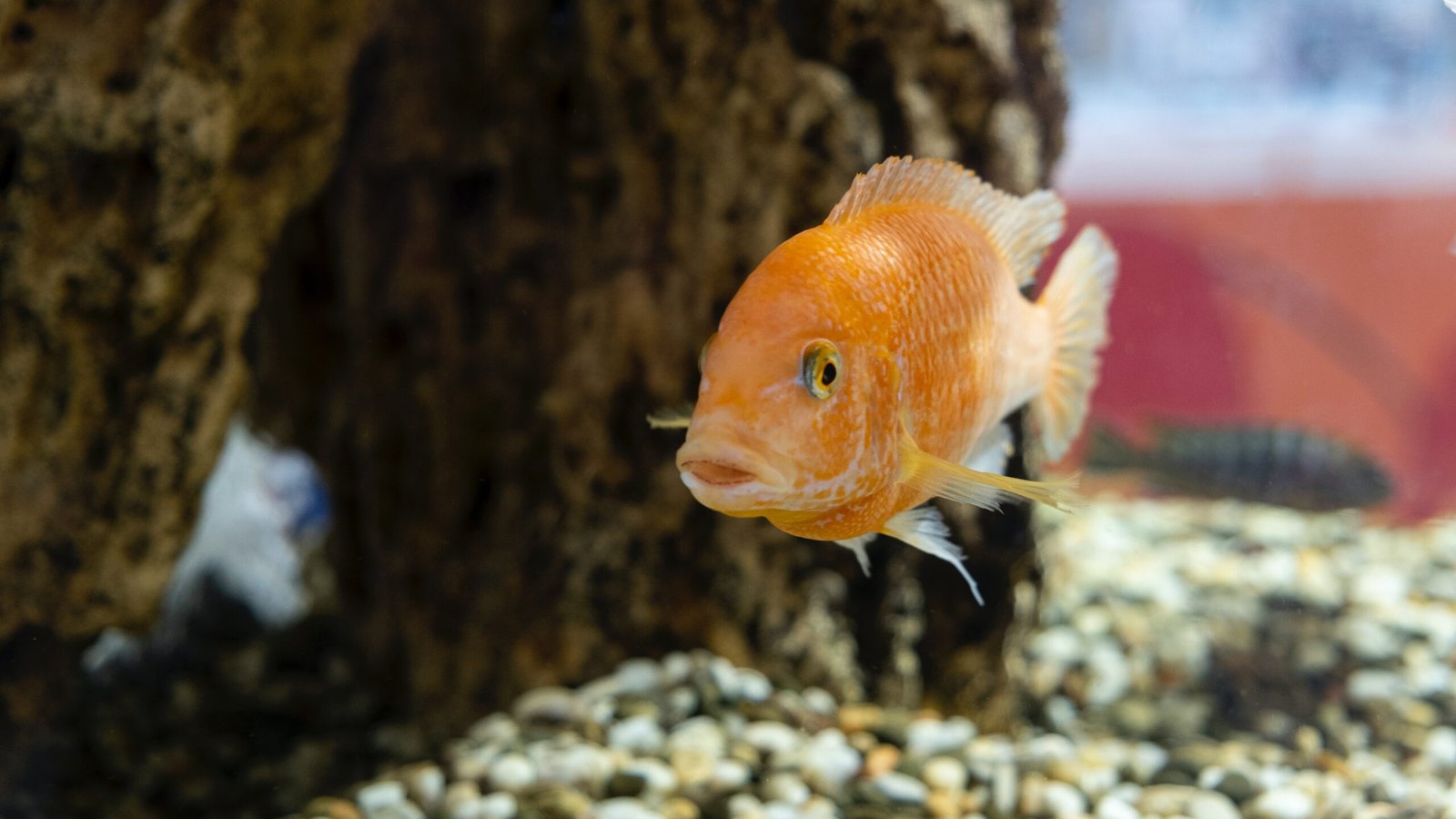
Consider placing live plants.
The aquarium looks empty without greenery. However, many people choose artificial plants to add a green element to their aquariums, as they are easy to clean and come in various colors. For me, live plants are the best and most decent choice.
Live plants look great in a fish aquarium and provide many other unique benefits. They act as excellent filtration, give the water oxygen, absorb carbon dioxide created by tank dwellers, combat algae growth and provide shelter for your fish to hide in.
The aquarium is set now. Let’s add water and fish to your tank.
How to add water to your tank?
Take enough water in buckets to fill your water tank and treat the water with a dechlorinating agent. When the water is ready, gently pour it into the tank. Then put some fish food in the tank to accelerate the growth of beneficial bacteria on the filter media. Wait until the brown color growths appear on the filter media. Without it, your fish will suffer ammonia poisoning.
Now, test water qualities. When the ammonia and nitrites are 0 ppm, and the nitrates are below 20 ppm, you can accommodate the fish in their tank.
Extra maintenance and cleaning of the tank to care for pet fish.
Test the pH levels weekly.
The optimum pH range for freshwater fishes is between 6.6 and 8. Add crushed coral to the filter if the pH is too low. If the pH is high, add peat moss to the filter or driftwood to the tank.
Do weekly partial water changes.
Nitrate levels in water should be kept below 20 ppm. Live plants help remove nitrates; however, does partially change tank water every week to keep the nitrate growth down. For this purpose, you can use a suction wand to remove the moisture and simultaneously pull out the debris from the substrate. Then, replace the removed water with fresh and dechlorinated water.
Best feed to care for a pet fish
Feeding the correct type of food is essential as well. Fish foods usually come in flake form, as pellets or freeze-dried. Special treats, like bloodworms and brine shrimp, can also be purchased from pet stores. Frozen food is good for avoiding contamination.
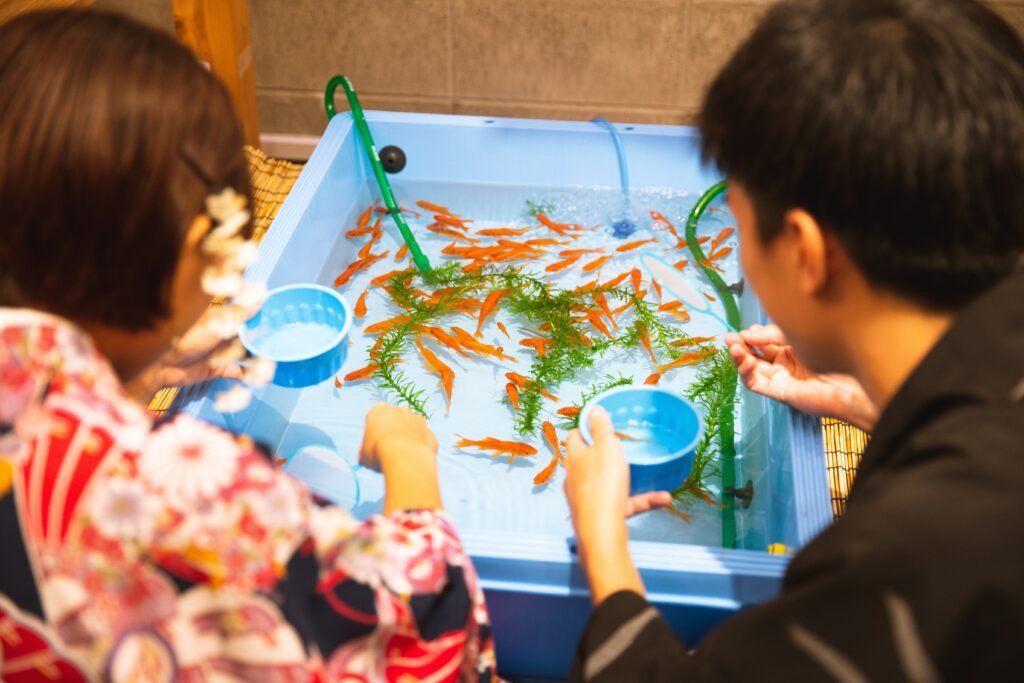
Don’t overfeed.
Overfeeding is one of the most common mistakes fish owners make. Excess food can cause all sorts of problems, including clogging filters, ammonia and nitrite spikes, and contributing to algae growth.
When to feed pet fish?
Fish don’t have stomachs, so they never know when to stop eating. When feeding your fish, only provide it as much as it will eat in two or three minutes once or twice daily to avoid overfeeding.
Takeaways
- It’s also a good idea not to smoke in the same room as your fish, as this damages the air quality.
- If you have other pets or if your fish jump, remember to get a lid for your tank.
- If one of your fish looks ill, scoop it out and isolate it in a separate tank to monitor its health. Add needed medications.
- Medications should never be added as a preventative measure.
- Make sure to remove any dead fish from the tank immediately to care for other pet fish in the tank.
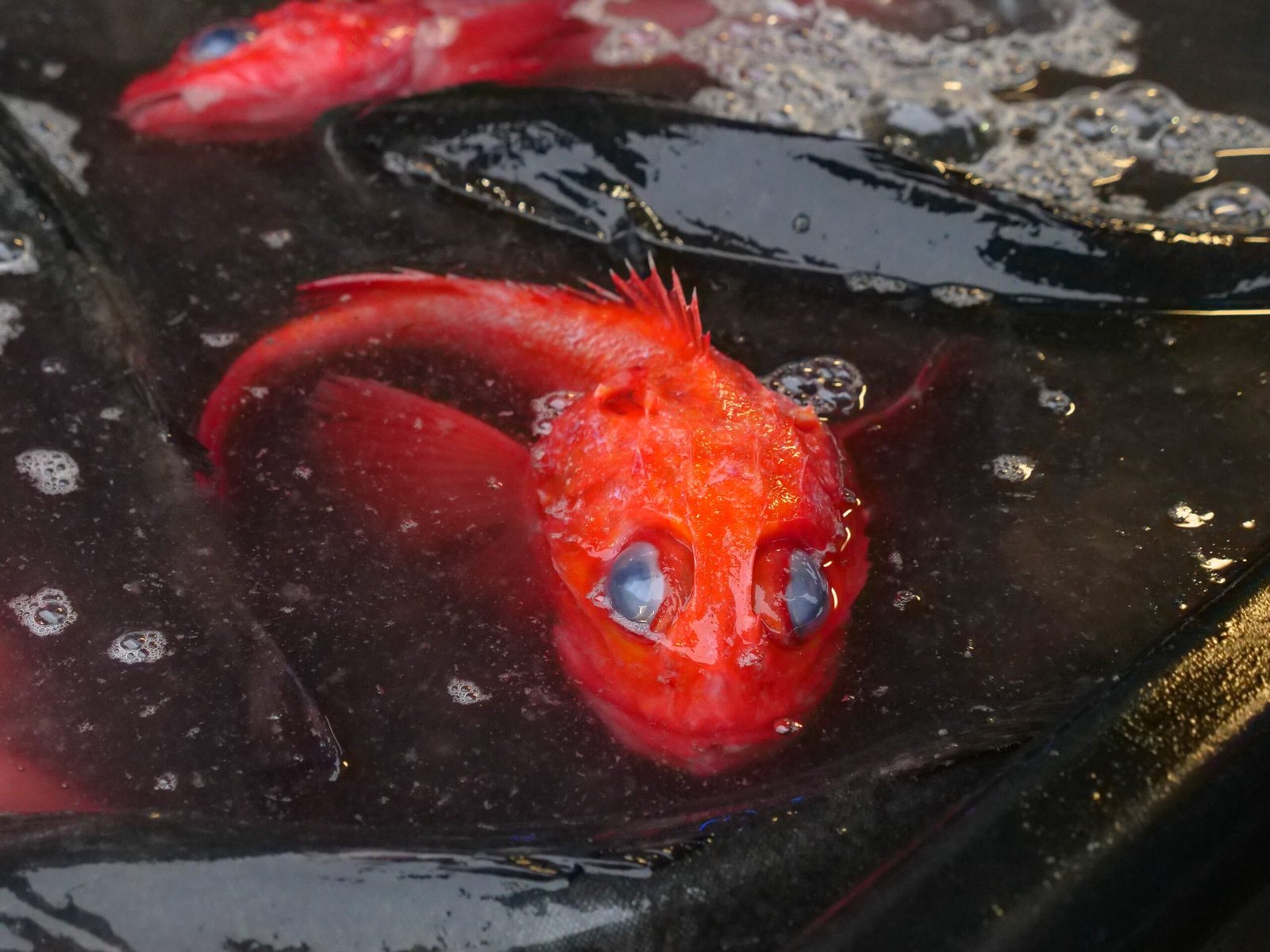
Look into “howtothing.net” detailed pages about care for dogs, cats, hamsters, horses, and birds to get more information.

